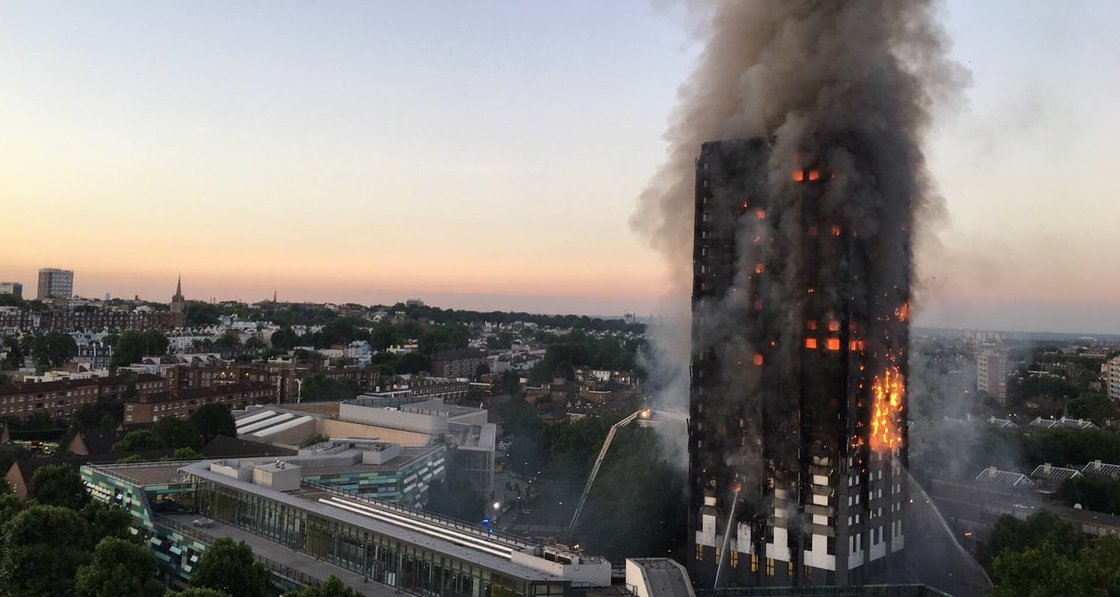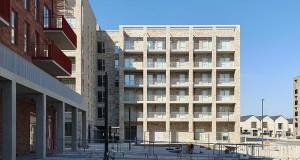
- Large Buildings
- Posted
An avoidable tragedy: questions for the public inquiry on Grenfell Tower
On 13 June, in an address about retrofit policy to the joint conference of the Sustainable Traditional Buildings Alliance and the Society for the Protection of Ancient Buildings, I suggested that the UK retrofit industry is dangerously incompetent, and that is why we need to implement the Each Home Counts industry review. Little did I know that in less than twenty-four hours those words would come back to haunt me in the most horrific way, writes Dr Peter Rickaby.
The Grenfell Tower fire in Kensington has changed the UK retrofit industry forever. Two days later, driving to another retrofit conference, I had to stop the car because a radio news report of children returning to their primary school to discover which of their classmates were dead or missing, was too upsetting. As I write this column I am still angry about an avoidable tragedy that, like all such events, is born of incompetence, complacency and carelessness at many levels.
We should not pre-judge the outcome of the public inquiry, but from the news reports and videos, and from some simple internet searches, we can discern that what happened is that a fire in a fourth-floor flat (one of 127 flats in the 24-storey building) was not contained by the compartmentation of the building but spread around and up the outside of the building through the recently installed external insulated cladding.
The fire safety instructions to residents advised them to stay in their flats because any fire would be contained by the compartmentation until extinguished. Many did stay, and died, because the advice had not been updated to take account of the risk of fire spread via the new cladding. There was no sprinkler system and only one stairway, which quickly filled with smoke.
The insulated external cladding consisted of combustible polyisocyanurate (PIR) insulation boards and combustible aluminium-plastic composite rain-screen cladding panels. The fire spread rapidly behind the cladding until the building was engulfed in flames, the insulation burned and melting panels fell on to escaping residents and rescuers. Whether fire stops were installed in the cladding, and if so why they were not effective, is not yet known.
The recent retrofit is claimed to have complied with all appropriate standards and building regulations, but full plans and specifications were not deposited with a building control body. Instead, a building notice was issued – a less expensive, quicker and perfectly legal procedure that is nonetheless inappropriate to a project of this size and complexity, because it reduces the opportunity for technical scrutiny.
No doubt the compliance of many aspects of the work was also self-certified by members of so-called ‘competent persons schemes’ that have been approved by the government to reduce the public cost of building control. Very few developed countries allow such self-certification, which has already been implicated in several retrofit failures.
The Grenfell Tower disaster raises hundreds of questions to which the surviving residents, the residents of other similar blocks, and the rest of us, are entitled to answers. Not least is how can such an event happen in the richest borough of one of the world’s greatest cities, in the twenty-first century? Here are the other questions that I want the public inquiry to answer:
• Why was Grenfell Tower insulated with combustible PIR board instead of incombustible mineral-fibre insulation?
• Why were the cheapest plastic-aluminium composite rain-screen cladding panels used, instead of slightly more expensive but fire-resisting ones?
• Were fire-stops correctly installed in the cladding? If no, why not? If yes, why weren’t they effective?
• Why wasn’t a sprinkler system installed, as would have been required in a new high-rise residential building, and as recommended by a coroner after a similar fatal fire in another residential block, a few years ago?
• Why weren’t the fire safety instructions updated to take account of the changed risk, after the recent retrofit?
• Was the compliance of any of the recent retrofit work self-certified under competent persons schemes, and if so did it comply?
• Why has the government so enthusiastically rolled out competent persons schemes for demonstrating compliance with building regulations, in the face of evidence that they are ineffective?
• Why have social housing organisations been starved of funds to invest in their housing stocks by cuts and by government-imposed rent reductions of one percent per year for four years?
• Why has the regulator, the Homes and Communities Agency (HCA), refused to allow housing organisations to borrow money to invest in their existing housing, and instead only supported borrowing in pursuit of the government’s policy of building as much new housing as possible?
• Why are new high-rise residential blocks, containing flats for sale at high prices, and which are springing up not only in Kensington & Chelsea but across London, built to current standards (including sprinklers) while social housing is neglected?
The Grenfell Tower fire will almost certainly mark the end of plastic-foam based external wall insulation systems on high-rise buildings, probably on any building. It may mark the end of any external wall insulation on residential towers, leaving us little option but to leave residents in cold, hard-to-heat, mouldy homes, or to demolish and rebuild. It may mark the end of retrofit in social housing, at least for a while, because scarce resources will quite rightly be diverted to improving fire safety and installing sprinkler systems. The social, economic and environmental repercussions will last for many years.
Peter Rickaby is Director of Rickaby Thompson Associates, a Trustee of the National Energy Foundation, a member of the Each Home Counts Implementation Board and chairs the BSI Retrofit Standards Task Group. The views expressed in this column are his own.
Related items
-
 King of the castle
King of the castle -
Retrofit redux: Catching up with A3
-
 Energy poverty and electric heating
Energy poverty and electric heating -
 New Ejot profile cuts thermal bridging losses by 25mm insulation equivalent
New Ejot profile cuts thermal bridging losses by 25mm insulation equivalent -
 Build Homes Better updates Isoquick certification to tackle brick support challenge
Build Homes Better updates Isoquick certification to tackle brick support challenge -
The transformative power of industrialised retrofit

